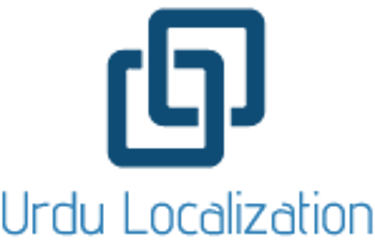
Mistakes to Skip When Localizing Content for Urdu
4 min read

Businesses expanding into Urdu-speaking markets often underestimate the complexity of localization. Translation alone is never enough; words need context, tone must feel natural, and every phrase must align with cultural expectations. Poorly localized content can damage credibility, confuse audiences, and even offend the very people a brand is trying to reach. Success depends on avoiding common mistakes while building strategies that prioritize cultural sensitivity, technical precision, and professional quality.
Direct translation without context
One of the biggest missteps in Urdu localization is leaning on word-for-word conversion. While it may appear efficient, direct translation strips content of nuance. A marketing slogan that carries energy in English might sound flat or even confusing in Urdu. For example, phrases built on humor or metaphor rarely survive literal translation. What matters is intent—the emotion and message behind the words. Professional Urdu translators adapt slogans and taglines so they retain impact in Urdu without losing brand identity. This balance of meaning and style cannot be achieved by mechanical word substitution.
Ignoring cultural sensitivities
Language reflects culture, and Urdu is deeply tied to traditions, religion, and community values. Content that ignores cultural nuance risks alienating audiences. A visual campaign that feels modern in one country may appear inappropriate in Pakistan or India. Even subtle word choices can carry unintended connotations. Skilled Urdu localization services factor in sensitivities around imagery, phrasing, and tone. When brands invest in translators who understand the cultural landscape, they ensure their messaging resonates rather than offends.
Overlooking right-to-left adaptation
Urdu is written from right to left, and design teams sometimes fail to fully account for this when localizing websites, apps, or documents. A site created for English users may look distorted when mirrored for Urdu readers if menus, buttons, and alignment are not properly adapted. These technical oversights frustrate users and weaken trust in the brand. Urdu localization services go beyond text—they restructure layouts so that the reading flow feels seamless and natural. Professional oversight ensures that every digital touchpoint respects the Urdu reading experience.
Neglecting SEO in Urdu
Search optimization is often overlooked when businesses translate content. Simply taking English keywords and rendering them into Urdu will not guarantee search visibility. Local users may phrase queries differently, often blending Roman Urdu, Urdu script, or regional spelling variations. Professional Urdu translators who specialize in digital marketing conduct dedicated keyword research to understand what people actually search for. This ensures that Urdu translation services not only make sense linguistically but also help content rank in local search engines, driving traffic and conversions.
Mishandling idioms and expressions
Languages thrive on idioms, sayings, and informal expressions, but they rarely translate neatly. An English idiom like “breaking the ice” cannot be understood literally in Urdu, and a direct translation would leave readers confused. The right approach is substitution with a culturally equivalent expression. Skilled translators select Urdu phrases that carry the same emotional weight and relatability. This makes communication sound authentic rather than forced, showing audiences that the brand understands how they actually speak.
Misjudging audience language levels
Urdu speakers span a wide range of educational and regional backgrounds. Content written in overly academic or archaic Urdu risks alienating younger or less formally educated readers. On the other hand, content that feels too casual or simplistic can appear unprofessional. The best Urdu content localization balances clarity with authority, using language that feels approachable without losing credibility. Professional Urdu translators adapt tone depending on audience demographics, ensuring inclusivity and engagement across different groups.
Forgetting to localize visuals and audio
Localization extends beyond text. Colors, symbols, and images carry strong cultural meaning, and an oversight in this area can undermine the entire translation effort. A color associated with celebration in one culture might suggest mourning in another. Similarly, background music, voice-overs, and subtitles must reflect local preferences. Professional Urdu voice-over and subtitling services ensure that audiovisual content feels natural and culturally relevant. This attention to detail demonstrates respect for the audience’s cultural identity.
Over-reliance on machine translation
Technology has made translation faster, but speed does not equal quality. Machine-generated Urdu translations often miss idiomatic subtleties, mix up grammar, or produce awkward phrasing. For sensitive industries like law, healthcare, or government, even a small error can have serious consequences. Professional Urdu translators review, edit, and refine translations with human judgment that no software can replicate. Human Urdu translation vs machine translation is not a competition—machines can assist, but human expertise defines quality.
Failing to adapt for mobile users
In Pakistan and other Urdu-speaking regions, mobile internet usage dominates. If localized content is designed only with desktop in mind, users may struggle with readability, navigation, or formatting on smaller screens. Urdu document translation and web localization services must account for responsive design, mobile typography, and touch-friendly layouts. This ensures that whether someone reads on a desktop, tablet, or smartphone, the experience remains smooth and professional.
Skipping review and testing
Even when translations are complete, skipping review is a costly mistake. Without proofreading, editing, and user testing, small errors may slip into published content. A misplaced diacritical mark, awkward phrasing, or broken layout can erode credibility instantly. Professional Urdu proofreading and editing services safeguard against these risks. Testing with native speakers ensures that content is not only accurate but also natural and engaging. This final step confirms that localization has achieved its goal: content that feels crafted specifically for the Urdu audience.
Brands that invest in high-quality Urdu localization set themselves apart in competitive markets. Avoiding the common mistakes of direct translation, cultural insensitivity, poor design adaptation, or reliance on machines can transform communication into connection. Professional Urdu translators provide more than linguistic accuracy—they deliver cultural insight, trust, and user-friendly experiences that machines cannot replicate. Whether it is Urdu document translation, Urdu voice-over and subtitling, or confidential Urdu translation services, the key lies in prioritizing human expertise. By respecting cultural context and focusing on authentic engagement, businesses can build credibility, inclusivity, and long-term trust within one of the world’s most dynamic language communities.
